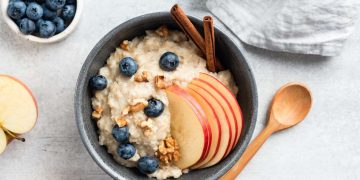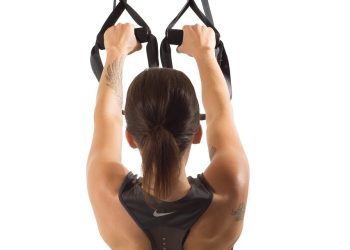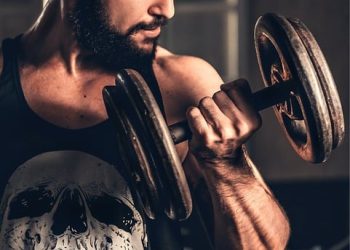Functional fitness has gained popularity in recent years as more people realize the importance of training their bodies for everyday movements and activities. Unlike traditional gym workouts that focus on isolated muscle groups, functional fitness exercises target multiple muscle groups to improve strength, flexibility, and mobility. In this comprehensive guide, we will discuss 15 essential functional fitness exercises that can help improve your overall fitness level and enhance your daily life.
Why Functional Fitness?
Functional fitness exercises are designed to improve your ability to perform everyday tasks safely and efficiently. Whether you’re lifting groceries, playing with your kids, or carrying heavy items, functional fitness can help you move with ease and reduce the risk of injury. By incorporating exercises that mimic real-life movements, you can build strength, improve flexibility, and increase balance and coordination.
15 Essential Functional Fitness Exercises
1. Squats:
Squats are one of the best functional fitness exercises that target your quadriceps, hamstrings, glutes, and core muscles. To perform a squat, stand with your feet hip-width apart, push your hips back, and lower your body as if sitting on a chair. Make sure to keep your chest up and back straight while maintaining proper form.
2. Deadlifts:
Deadlifts are excellent for strengthening your lower back, hamstrings, and glutes. Begin by standing with your feet hip-width apart, holding a barbell or dumbbells in front of you. Hinge at the hips, keeping your back straight, and lower the weight towards the ground. Engage your core and drive through your heels to return to the starting position.
3. Lunges:
Lunges are great for improving balance, coordination, and unilateral strength. Start by standing with your feet together, take a step forward with one foot, lower your body until both knees are at 90-degree angles, then push back to the starting position. Repeat on the other side to target both legs.
4. Planks:
Planks are effective for strengthening your core muscles, including your abdominals, obliques, and lower back. Begin by getting into a push-up position with your hands directly under your shoulders. Keep your body in a straight line from head to heels and hold the position for 30 seconds to 1 minute.
5. Push-ups:
Push-ups are a classic exercise that targets your chest, shoulders, triceps, and core muscles. Start in a plank position with your hands slightly wider than shoulder-width apart. Lower your body until your chest nearly touches the floor, then push back up to the starting position. Modify by dropping to your knees if needed.
6. Pull-ups:
Pull-ups are a challenging exercise that strengthen your back, shoulders, and arms. If you’re new to pull-ups, you can use an assisted pull-up machine or resistance bands to help you build strength. Hang from a pull-up bar with your palms facing away, engage your back muscles, and pull your body up until your chin clears the bar.
7. Kettlebell Swings:
Kettlebell swings are a dynamic exercise that target your hips, glutes, hamstrings, and core. Begin with your feet shoulder-width apart, hold a kettlebell with both hands, and hinge at the hips to swing the weight between your legs. Drive through your hips and extend your knees to swing the kettlebell up to shoulder height.
8. Farmer’s Walk:
Farmer’s walks are a functional exercise that improves grip strength, forearm endurance, and shoulder stability. Hold a pair of heavy dumbbells or kettlebells in each hand, engage your core, and walk for a set distance or time. Focus on maintaining good posture and keeping your shoulders down and back.
9. Step-ups:
Step-ups are a unilateral exercise that target your quadriceps, hamstrings, and glutes. Stand in front of a sturdy box or step, place one foot on top, and step up, driving through your heel to lift your body onto the box. Step back down with control and repeat on the other side.
10. Medicine Ball Slams:
Medicine ball slams are a powerful full-body exercise that improves cardiovascular fitness, explosive power, and core strength. Stand with your feet shoulder-width apart, hold a medicine ball overhead, forcefully slam the ball down to the ground, and catch it on the bounce. Repeat for reps or time.
11. Turkish Get-ups:
Turkish get-ups are a complex exercise that challenge your stability, coordination, and strength. Start by lying on your back with a kettlebell or dumbbell in one hand, press the weight overhead, and use your core to roll up to a standing position. Reverse the movement back to the starting position and switch sides.
12. Bicycle Crunches:
Bicycle crunches are a core exercise that targets your abdominals, obliques, and hip flexors. Lie flat on your back, bring your knees towards your chest, and rotate your torso to bring one elbow towards the opposite knee. Alternate sides in a pedaling motion to engage your core muscles.
13. Bear Crawls:
Bear crawls are a dynamic exercise that improve coordination, agility, and total-body strength. Begin in a tabletop position with your knees hovering off the ground, walk forward by moving opposite hand and foot at the same time. Focus on keeping your hips level and core engaged throughout the movement.
14. Wall Sits:
Wall sits are a simple yet effective exercise that strengthens your quadriceps, hamstrings, and glutes. Stand with your back against a wall, slide down until your thighs are parallel to the ground, and hold the position for 30 seconds to 1 minute. Focus on keeping your core tight and breathing deeply.
15. Burpees:
Burpees are a high-intensity exercise that combines strength, cardio, and plyometrics. Begin by standing with your feet hip-width apart, squat down, place your hands on the floor, jump your feet back into a plank position, perform a push-up, jump your feet back to the squat position, and explosively jump up with arms overhead.
Benefits of Functional Fitness Exercises
Functional fitness exercises offer a wide range of benefits for individuals of all fitness levels. Some of the key advantages include:
1. Improved Strength:
Functional fitness exercises target multiple muscle groups simultaneously, helping you build overall strength and muscle endurance.
2. Increased Flexibility:
By incorporating movements that mimic real-life activities, functional fitness can improve your flexibility and range of motion.
3. Enhanced Balance and Coordination:
Functional fitness exercises challenge your balance and coordination, improving your ability to move with control and stability.
4. Reduced Risk of Injury:
By strengthening the muscles and joints used in everyday movements, functional fitness can help reduce the risk of injuries during daily activities or sports.
5. Better Posture:
Functional fitness exercises promote proper alignment and core stability, which can improve your posture and reduce back pain.
6. Improved Cardiovascular Fitness:
Many functional fitness exercises involve dynamic movements that elevate your heart rate and improve cardiovascular endurance.
7. Increased Functional Strength:
Functional fitness focuses on movements that translate to real-life activities, making you stronger and more capable in daily tasks.
Common Questions about Functional Fitness
1. Is functional fitness suitable for beginners?
Yes, functional fitness exercises can be modified to suit all fitness levels, from beginners to advanced athletes. It’s important to start with basic movements and gradually increase the intensity as you build strength and confidence.
2. How often should I do functional fitness exercises?
Ideally, you should incorporate functional fitness exercises into your workout routine 2-3 times per week. Remember to allow for rest and recovery between sessions to prevent overtraining.
3. Can functional fitness help with weight loss?
Functional fitness can be a valuable tool for weight loss when combined with a healthy diet and regular exercise. By engaging multiple muscle groups and boosting your metabolism, functional fitness exercises can help you burn calories and shed excess body fat.
4. Are functional fitness exercises safe for older adults?
Yes, functional fitness exercises can be beneficial for older adults as they help improve strength, balance, and mobility, which are essential for maintaining independence and reducing the risk of falls. It’s important to consult with a fitness professional to ensure exercises are tailored to individual needs and abilities.
Conclusion
Functional fitness exercises are a valuable addition to any fitness routine, helping you improve strength, flexibility, and mobility for everyday activities. By incorporating a variety of functional movements into your workouts, you can enhance your overall fitness level and reduce the risk of injury. Whether you’re a beginner or advanced athlete, these 15 essential exercises can help you build a strong and functional body that supports you in all aspects of life. Start incorporating functional fitness into your workouts today and experience the benefits for yourself!












































